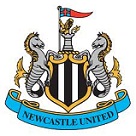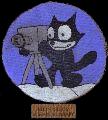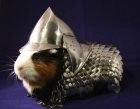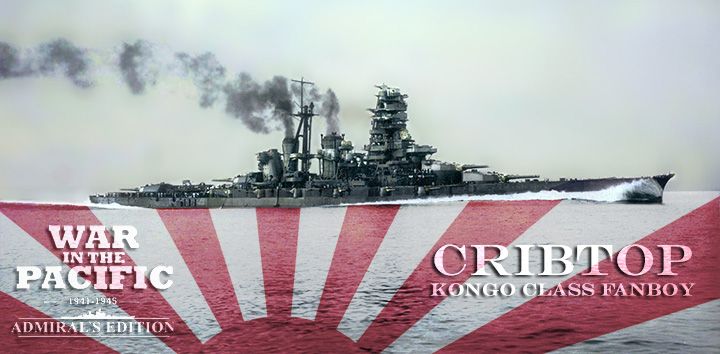BBfanboy
Posts: 18046
Joined: 8/4/2010
From: Winnipeg, MB
Status: offline

|
quote:
ORIGINAL: obvert
quote:
ORIGINAL: viberpol
quote:
ORIGINAL: crsutton
I have run my game with Ark through 1945 and life in surface battles really seems to mimic this. Now in our game the Allies surface forces totally dominate most any action-even with relatively equal forces. I just don't know how the game mechanics works but can only assume that more sophisticated radar is a factor. You sweat Japanese torpedoes in 42 and 43 but they just seem to become less of a factor later on while Allied torpedoes seem to be more effective. I think Viberpol will confirm this.
It's OT and thread's hijacking but...
OK. Well... Ross, I still believe I must been doing something wrong... 
But for those of JFB who believe in the Japanese night engagement supremacy,
the truth is that the surface action in 4'45 looks more or less like this:
Night Time Surface Combat, near Ningpo at 92,56, Range 2,000 Yards
Japanese Ships
DD Natsuzuki, Shell hits 28, and is sunk
DD Akishimo, Shell hits 1
DD Wakaba, Shell hits 24, heavy fires, heavy damage
DD Maki, Shell hits 29, and is sunk
DD Kashi, Shell hits 24, and is sunk
DD Kaede, Torpedo hits 1, and is sunk
DD Sakura, Shell hits 9, Torpedo hits 1, and is sunk
DD Minekaze, Shell hits 3, on fire
Allied Ships
DD Taussig, Shell hits 1
DD Bearss, Shell hits 1
DD Conway, Shell hits 9, on fire
DD Haggard, Shell hits 5
DD Norman Scott, Shell hits 12
Poor visibility due to Thunderstorms with 3% moonlight
Maximum visibility in Thunderstorms and 3% moonlight: 2,000 yards
It's like Japanese ships and their captains lost their ability to fight at night...
and forgot how to use the long lances. Quite depressing I must say... 
If spreads of any torpedo were launched from 2k yards it would be tough to maneuver out of the way while firing accurately and not careening into the other ships in your own battle line. At night this would be much harder, and with the Type 93 it would be hardest I would think, as it would take about 30 seconds to arrive after launch at that distance.
I'd guess that in this battle none were launched as the visibility was only 2k and the USN probably opened fire by radar, hitting and creating confusion before the Japanese could even see them.
I've had a lot of these kinds of affairs already in 44 with the IJN suffering if here is any kind of visibility or detection discrepancy, and I think while that's incredibly frustrating, it might be getting close to accurate for the period.
I think the Japanese did not have much chance to launch torpedoes. The US ships had good radar that could penetrate the rain, and would have had their torps ready to launch on fairly accurate range and bearing data when the enemy was spotted. The Japanese would have needed time to gather such data and put it into their computers to aim their torpedoes and guns. During that time they were raked with gunfire of every caliber and hit with US torpedoes.
Also note that Japanese torpedo doctrine [authored by Capt. Tameichi Hara who wrote "Japanese Destroyer Captain"] was to rush in on a parabolic course, launching at the point of the parabola and rush away. This avoided enemy torpedoes and allowed the Japanese ships to reload their tubes in 20 minutes. The did not have much training in launching from a flat-footed straight course. Even Tanaka at Tassafaronga had to get the ships moving on an arc to make his torpedo attack.
_____________________________
No matter how bad a situation is, you can always make it worse. - Chris Hadfield : An Astronaut's Guide To Life On Earth
|
 Printable Version
Printable Version




















 ). A german bomb landed one block away during the blitz (I cringe walking around the city seeing the filled in spaces imagining what this city was like during that time) and cleared space between the Georgian homes on the street for a Virgin Gym where I now go to swim. I can see the dome of St Paul's from my living room window and the Olympic Stadium from my bedroom.
). A german bomb landed one block away during the blitz (I cringe walking around the city seeing the filled in spaces imagining what this city was like during that time) and cleared space between the Georgian homes on the street for a Virgin Gym where I now go to swim. I can see the dome of St Paul's from my living room window and the Olympic Stadium from my bedroom. 



 New Messages
New Messages No New Messages
No New Messages Hot Topic w/ New Messages
Hot Topic w/ New Messages Hot Topic w/o New Messages
Hot Topic w/o New Messages Locked w/ New Messages
Locked w/ New Messages Locked w/o New Messages
Locked w/o New Messages Post New Thread
Post New Thread